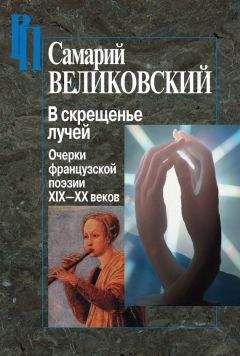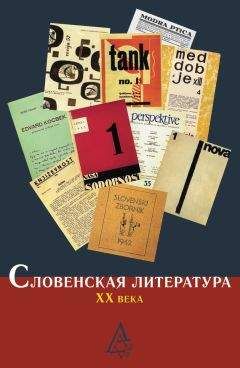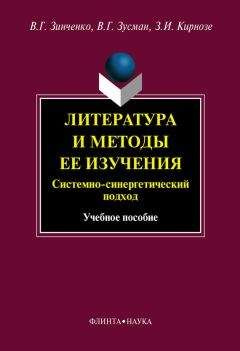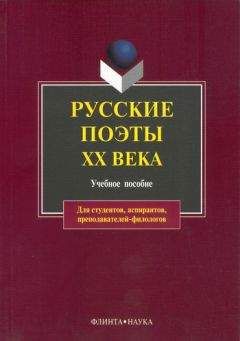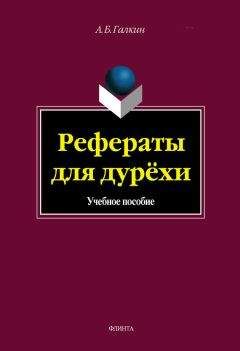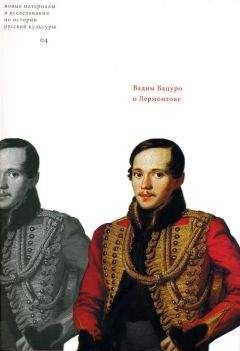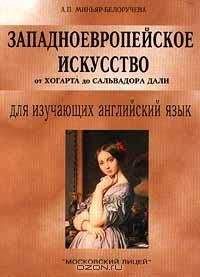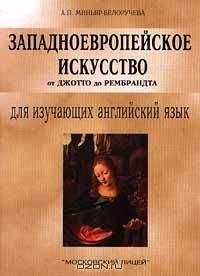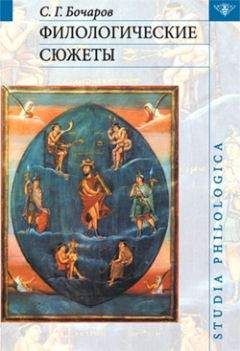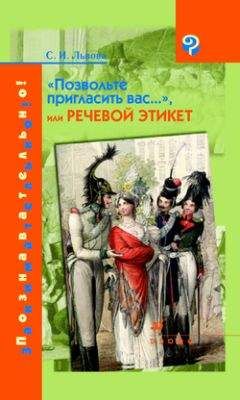Илья Кукулин - Машины зашумевшего времени
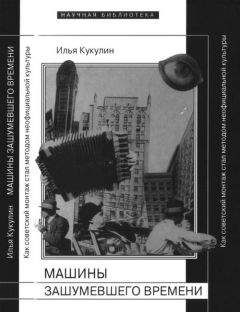
Скачивание начинается... Если скачивание не началось автоматически, пожалуйста нажмите на эту ссылку.
Жалоба
Напишите нам, и мы в срочном порядке примем меры.
Описание книги "Машины зашумевшего времени"
Описание и краткое содержание "Машины зашумевшего времени" читать бесплатно онлайн.
Эта книга — попытка заново выстроить историю русского модернизма через историю монтажа. Развитие монтажа в культуре XX века получило мощный импульс после изобретения кинематографа и превращения его в модный вид искусства. Аналоги киномонтажа в 1920‐е годы сложились в других видах искусств — литературе, плакатной графике, театре. У разных авторов и в разные периоды он используется то как локальный прием, то как последовательный метод, то как целостная эстетика. В 1930–2000‐е годы монтажные методы неоднократно изменяли свои функции и семантику. Следя за тем, как они от десятилетия к десятилетию то становятся почти незаметными, то вновь используются в самых разных контекстах, можно увидеть принципиально новые сюжеты в развитии искусства конца XIX–XXI веков, от Стефана Малларме до интернетных коллажей, составленных из блоговых заметок и видеозаписей. Эта книга рассказывает о том, как монтаж сначала стал «стилем эпохи» 1920‐х годов в самых разных странах (СССР, Германия, США…), а после все больше оказывался нужен неподцензурной словесности и «альтернативным» направлениям в кино и визуальном искусстве. Среди героев книги — Дзига Вертов и Артем Веселый, Сергей Эйзенштейн и Александр Солженицын, Эль Лисицкий и Саша Соколов, Энди и Лана Вачовски и Павел Улитин.
Уайлдер Т.
Уайт Х.
Уилрайт Ф.
Уильямс Тенесси.
Уитмен У.
Улановская Б.
Улитин П. П. (псевд. Юл Айтн [Ul Itin], Устин Малапагин).
Улитина Л.
Улитина У.
Улицкая Л. Е.
Уляшев В.
Уолман Дж.
Уорхол Э.
Урицкий А.
Урманов А. В.
Успенский Б. А.
Устинов А.
Ушакин С. А.
Уэкер Н.
Уэллес У. Р.
Уэллс Г.
Файко А. М.
Фальконетти Р.
Фароки Х.
Фёгелин Э.
Фейдер В. А.
Феллини Ф.
Феноллоза М.
Феноллоза Ф.
Фехнер Г. Т.
Фицпатрик Ш.
Фишер Ф. Т.
Флейшман Л. С.
Флинн К.
Флинт Г.
Флобер Г.
Фоменко А. Н.
Фоменко П. Н.
Фонвизин Д. И.
Фонда Дж.
Формозов Н. А.
Фрайман Т. Н.
Фрейд З.
Фрейдкин М. И.
Фридрих II (король Пруссии).
Фризби Д.
Футерфас Г. М. (Ханох Либерман, Фетер Генах).
Фюрстенберг А. фон (Fürstenberg A. von).
Хабаров И. П.
Хадеев К. И.
Хаксли О.
Хаммершлаг Я.
Ханкиш Я.
Ханютин Ю. М.
Харабаров И. М.
Харитонов В. В.
Хармс Д. И.
Хартфилд Дж. (Херцфельд Х.).
Хаусманн Р.
Хаустов В. Н.
Хвостенко А. Л.
Хелемендик В. С.
Херсонский Б. Г.
Херцфельде В.
Хетеньи Ж.
Хёх Х.
Хинкис В. А.
Хитилова В.
Хмельницкий Д. С.
Хобсбаум Э.
Ходасевич В. Ф.
Ходж М.
Холин И. С.
Холопов А.
Хоружий С. С.
Хофманн К.
Хохлова А. С.
Хохлова Е. С.
Хренов Н. А.
Хрущев Н. С.
Хуттунен Т.
Хэмингуэй Э.
Хэниш К.
Цветаева М. И.
Цейтлин М.
Цибульский М.
Цивьян Ю. Г.
Цыганков Д.
Чаадаев П. Я.
Чанцев А.
Чапек К.
Чаплин Ч.
Чарный С.
Чарская Л.
Черкасов Н.
Чернев А. Д.
Черновский А.
Чертков Л.
Чехов А. П.
Чиаурели М. Э.
Чичерин А. Н.
Чудаков А. П.
Чудакова М. О.
Чуковская Л. К.
Шабалин В.
Шагал М. З.
Шагинян М. С.
Шаламов В. Т.
Шалина М. А.
Шапир М. И.
Шапиро Л.
Шаров В. А.
Шатилов И.
Шатров Ил. А.
Шафаревич И. Р.
Шварц Е. Л.
Шварц Ел. А.
Швейцер А.
Швейцер М. А.
Шембель Д.
Шенгели Г. А.
Шенк Ф. Б.
Шёнле А.
Шер Ю. Л.
Шестаков В. А.
Шилинис Н.
Шичалин Ю. А.
Шишкин М. А.
Шкапская М. М.
Шкловский В. Б.
Шматко Н. А.
Шмелёв А. Д.
Шмидт П. П.
Шолем Г.
Шолохов М. А.
Шостакович Д. Д.
Шрага Е. А.
Штейнер Р.
Штеренберг А.
Шуб Э.
Шубинский В. И.
Шукшин В. М.
Шулер Д.
Шумилова Е. П.
Щеголев П. И.
Щербенок А. В.
Эдельман Н.
Эйдельман Н. Я.
Эйзенштейн М. О.
Эйзенштейн С. М.
Эйнштейн А.
Эйхенбаум Б. М.
Эколье Р.
Элгер Д.
Элиот Т. С.
Эль Лисицкий (Лисицкий Л. М.).
Эльсберг Я. Е.
Энгельс Ф.
Эренбург И. Г.
Эренбург Ир. И.
Эриксон-младший Э. Э. (Ericson Junior E. E.).
Эрлих А. И.
Эрль В.
Эрмлер Ф. М.
Эрнст М.
Эсе Л.
Эстрайх Г.
Эткинд А. М.
Юмэмакура Баку.
Юнг К. Г.
Юнгер Э.
Юренев Р. Н.
Юрский С.
Юрчак А.
Юрьев О. А.
Юрьенен С. С.
Юткевич С. И.
Ягода Г. Г.
Ядов В. А.
Яковлев А. Н.
Яковлева Е.
Якубович Г. М.
Ямпольский И. Г.
Ямпольский М. Б.
Янгиров Р. М.
Янечек Дж.
Янушкевич А. С.
Яр-Кравченко А. Н.
Яров С. В.
Яропольский Г. Б.
Ярошевский М. Г.
Acquaviva F.
Ades D.
Altshuler M.
Antonioz M.
Aumont J.
Avrutin L.
Bai R.
Baron S.
Beiner R.
Benton T.
Bergguen O.
Bergman J.
Berkhoff K.
Bernhardt O.
Biggiero F.
Bird J.
Bradbury M.
Bronner S. E.
Brown N.
Bruce Elder B.
Buchloh B. H. D.
Bűrger P.
Calavito M.
Carter E. R.
Cavendish P. H.
Celant G. — см. Селант Г.
Clark T.
Curtis J.
Dobroszycki L.
Dollenmayer D. B.
Dukhan I.
Elliott Gr.
Ellmann R.
Ernst P.
Fontius M.
Friedberg M.
Fürstenberg A. von — см. Фюрстенберг А. фон.
Furthman-Durden E. C.
Garrett L.
Gasiorek A.
Geyer M.
Giroud M.
Grieder P.
Griffin R.
Gurock J. S.
Hahn H.-J.
Haran B.
Hartley J.
Heckler C. H.
Heusser M.
Hildreth L.
Hobbs R.
Hoffmann D.
Hollein M.
Honour H.
Howes S.
Hynes S.
Jackson M. J.
Kadlec D.
Kastner J.
Keller A.
Keller O.
Kelly E.
Kennedy G. A.
Kerler D. B.
Klein L.
Klinger C.
Kriebel S. T.
Labrusse R.
Lange K.
Latham S.
Lavin M.
Lawrence K.
Levenson M.
Lima L. C.
Link T.
Lippard L. R.
Litvinoff E.
Löwy M.
Lydenberg R.
Mahoney D.
Marcus S.
Mateboer N.
McFarlane J.
McWilliam K.
Meighan M.
Mitchell R.
Montfort N.
Moore D.
Morris I.
Moser W.
Muldoon M.
Newman M.
Neyraut M.
Nicholls P.
Obermayr B. — см. Обермайр Б.
Osterhammel J. — см. Остерхаммель Ю.
Ott K.-H.
Peil D.
Petersson N. P.
Piekut B.
Pipes R.
Pontuso J. F.
Ricciardi A.
Rickwood T. M.
Robinson E. S.
Roose-Evanse J.
Salzer D. M.
Saussy H.
Schabacher G.
Schmidt H.
Selz P.
Stalling J.
Staёl N. de.
Stock N.
Stuffman M.
Teitelbaum M.
Thirion B.
Tiberghien G. H.
Tomei C. D.
Townsend S. H.
Tytell J.
Uhlenbruch B.
Veesgulani S.
Wallis B.
Wechsler J. G.
White A.
Wilson T.
Zurbrugg N.
Summary
This book examines shifts in the meaning of montage in different historical situations and in various artistic media, including literature, cinema, theater, and visual arts. Its scope includes literature and art of Soviet Russia (both official and unofficial), Germany, France, and the United States from 1910 to the 2010s. While this book does not provide a cohesive historical sketch, it delivers comparative studies on artists whose works problematize common understandings of the avant-garde in art history.
This study argues that different types of artistic montage correspond to different conceptions of history, dividing the history of montage aesthetics and techniques into three periods: (1) constructing, (2) post-utopian, and (3) historicizing or analytic montage. This book intends to demonstrate how the revolutionary montage aesthetics of the 1920s was reinterpreted and adapted for critical analysis of utopian consciousness in unofficial literature and art of the 1960s and 1970s. This change became possible because unofficial art, unlike Soviet socialist realism, was connected with the experiments of European and American radical modernism and postmodernism.
The main points of this book can be summarized as follows.
Montage as a specific aesthetic method emerged in the very beginning of the twentieth century. Beginning in the 1900s and continuing throughout the 1920s, expressive, «sharp» montage — not only in cinema but also in visual arts and literature — was implemented as a method for the dynamic representation of contemporaneity. Montage produced an aesthetic portrayal of contemporaneity by depicting it as a space of emerging utopia/dystopia, full of conflicts and antagonistic oppositions. Moreover, «montage modernity» acquired the status of a totally new historical period, anthropologically and aesthetically different from all previous epochs. The aesthetics of montage was based on the experience of psychological trauma originating from urbanization, globalization (including the extensive contact of Western artistic circles with the art of China and Japan), WWI, and the subsequent civil wars in Russia and Germany. This book suggests that sharp montage was an element not only of avant-garde art, but also of the diverse movements of modernism and, later, postmodernism.
In the USSR of the 1920s, montage aesthetics acquired the features of a «grand style.» The difference between «present-day society» and the previous condition of society and culture was ideologized and politicized. In Soviet productions, the Bolshevik party and «progressive» men and women were dubbed the «avant-garde of humanity,» and were represented as the leading force in creating a new historical reality. This creation was represented — in Sergei Eisenstein’s films, Boris Pilniak’s novels, Gustav Klutsis’ photo-collages, and Sergei Tretiakov’s theater plays — as a creative violence that overcomes the dark, impersonal violence of non-regulated history. The aesthetics of montage was a tool to either glorify or stoically accept this violence. Stoical acceptance was chosen by, among others, Yuri Tynianov and Artem Vesioly. El Lissitsky’s 1920s works reveal the hidden mystical and occult sources of the «montage representation of history,» and undermine the common understanding of avant-garde art as «atheist» and «aggressive.»
Several times, Soviet montage was interpreted as a radicalization of Western European and pre-revolutionary Russian (e.g. Andrey Bely) montage aesthetics. However, Soviet montage also strongly influenced left-wing artists in various countries: the image of history as a dynamic-conflicting becoming corresponded with leftist worldviews, and with Marxist and socialist ones first of all.
Meanwhile, different versions of montage aesthetics developed in Western Europe and in the USA. Take, for example, the work of Alfred Döblin, Erwin Piscator, Bertolt Brecht, and Walter Ruttmann in Germany; Karel Čapek in Czechoslovakia; John Dos Passos in the USA; James Joyce in Ireland and France; and Ezra Pound in Great Britain. Not all of these artists were connected with socialist circles: Čapek was a liberal, Joyce’s political opinions were also more or less liberal, and Ezra Pound was, as is well-known, close to Italian fascism.
«Epic Polyphonic Political Art» (EPPA) was the most important montage movement formed during the twenties and early thirties. This movement includes the films of Sergei Eisenstein and Dziga Vertov, the plays of Bertolt Brecht and Vsevolod Vishnevskii, the theater performances directed by Erwin Piscator and Vsevolod Meyerhold, and, as strange as it may seem, the Jefferson Cantos by Ezra Pound. The most common EPPA plot featured a major historical turning point and an approaching anthropological transformation. EPPA existed in the USSR, Central Europe, and the USA. Hence, this movement functioned as an interactive space between Soviet culture and Western left (and even non-left) artistic movements of the 1930s.
Some authors living in the USSR transformed montage’s meaning in their texts in order to critically revisit the Bolshevik image of history, and to resist state-controlled propaganda. Such texts — including prose works by Lev Luntz, Mikhail Bulgakov, and Daniil Kharms — were kept from the Soviet public, or were «written for the drawer,» without the expectation of receiving the censor’s approval. Such texts and works of art are designated non-censored art, to utilize a term that has been accepted in Russian underground criticism since the 1970s.
Подписывайтесь на наши страницы в социальных сетях.
Будьте в курсе последних книжных новинок, комментируйте, обсуждайте. Мы ждём Вас!
Похожие книги на "Машины зашумевшего времени"
Книги похожие на "Машины зашумевшего времени" читать онлайн или скачать бесплатно полные версии.
Мы рекомендуем Вам зарегистрироваться либо войти на сайт под своим именем.
Отзывы о "Илья Кукулин - Машины зашумевшего времени"
Отзывы читателей о книге "Машины зашумевшего времени", комментарии и мнения людей о произведении.





